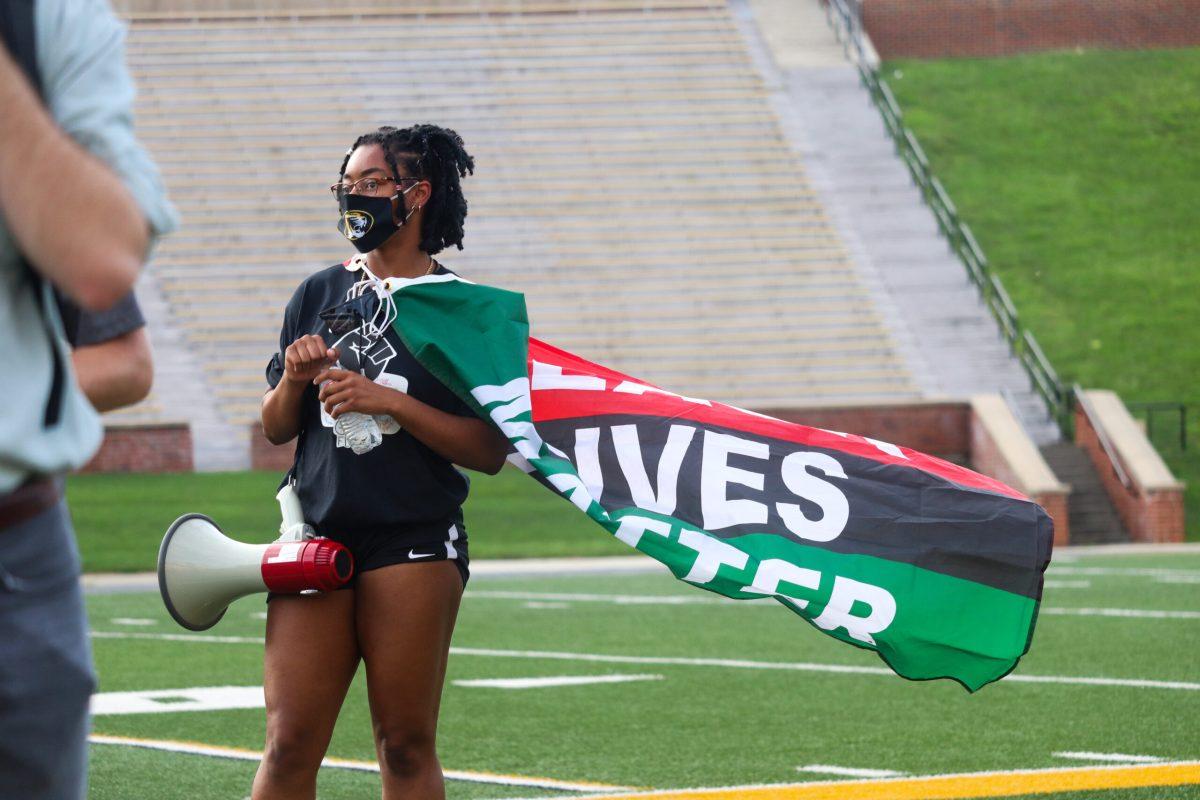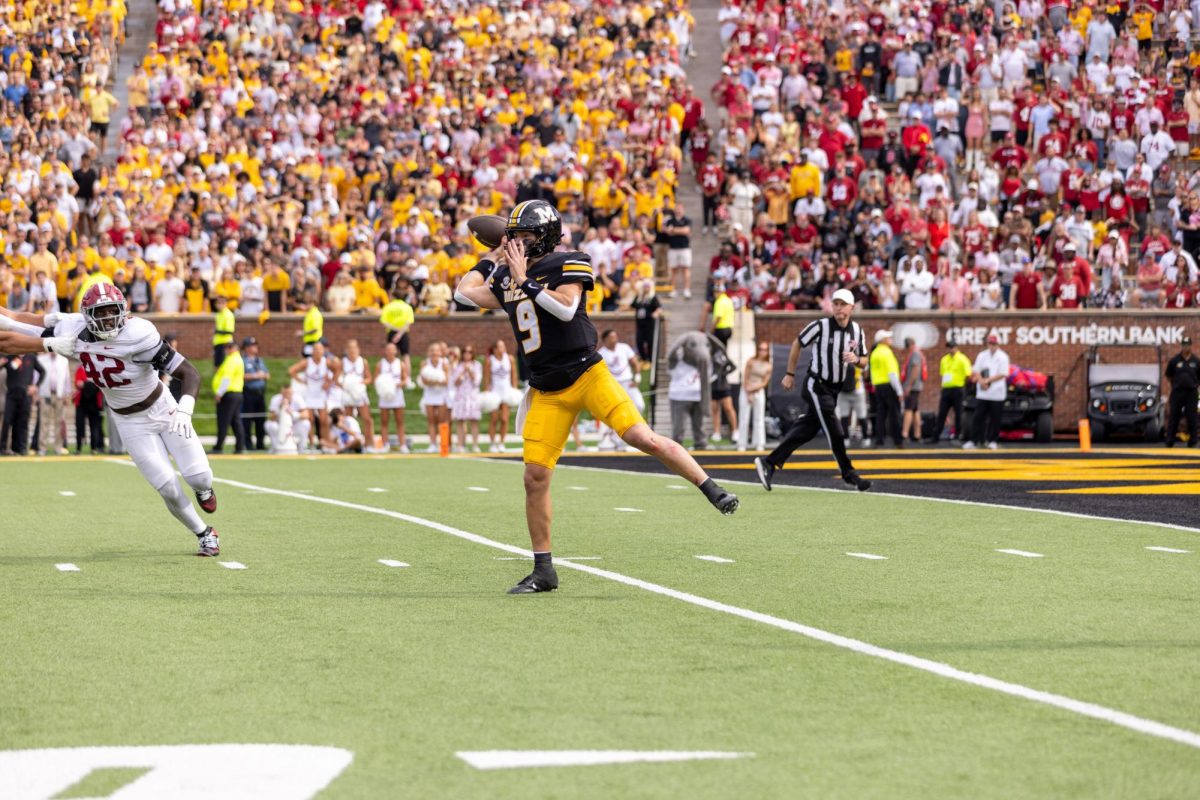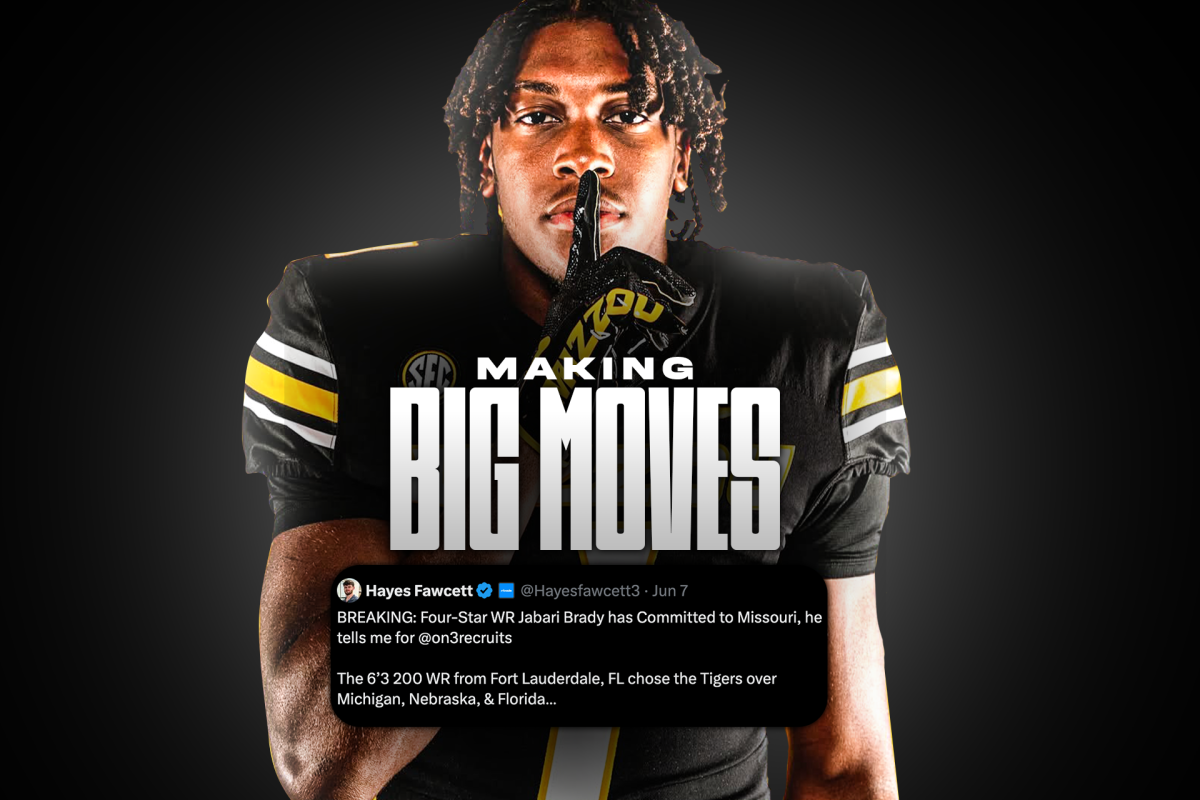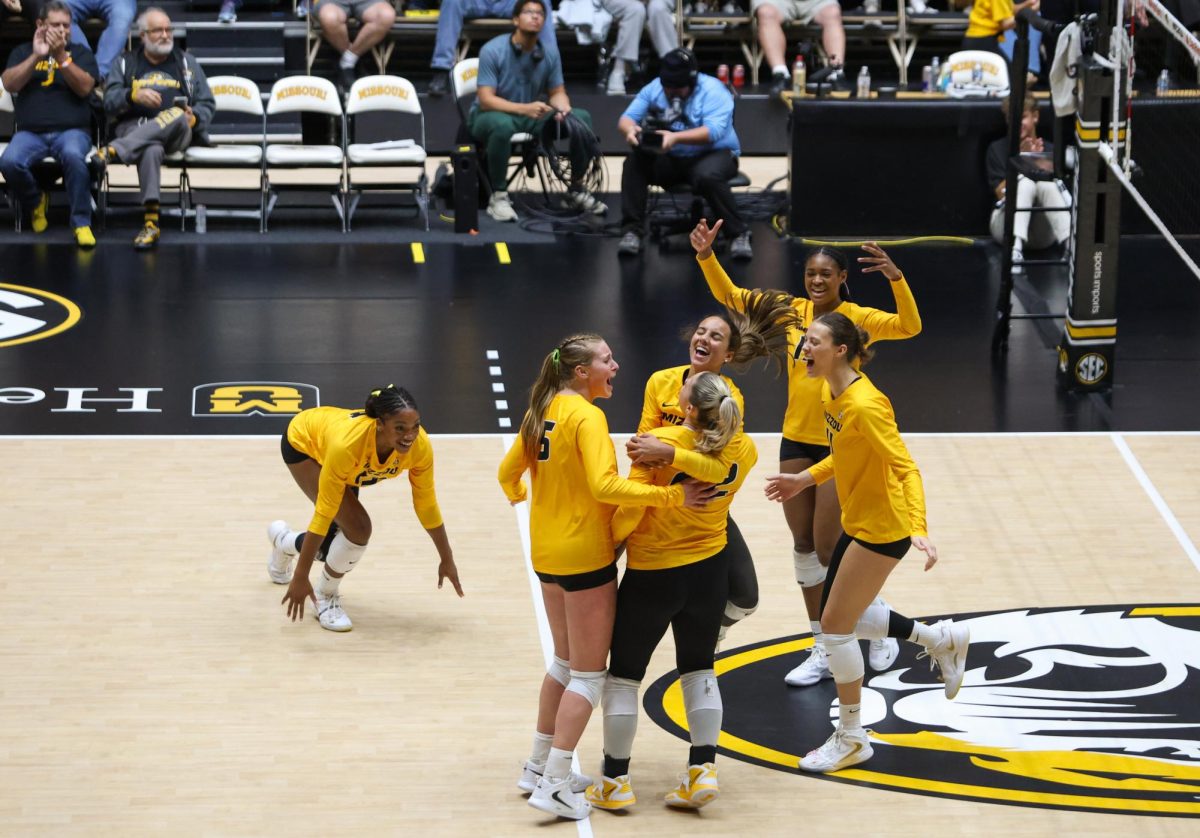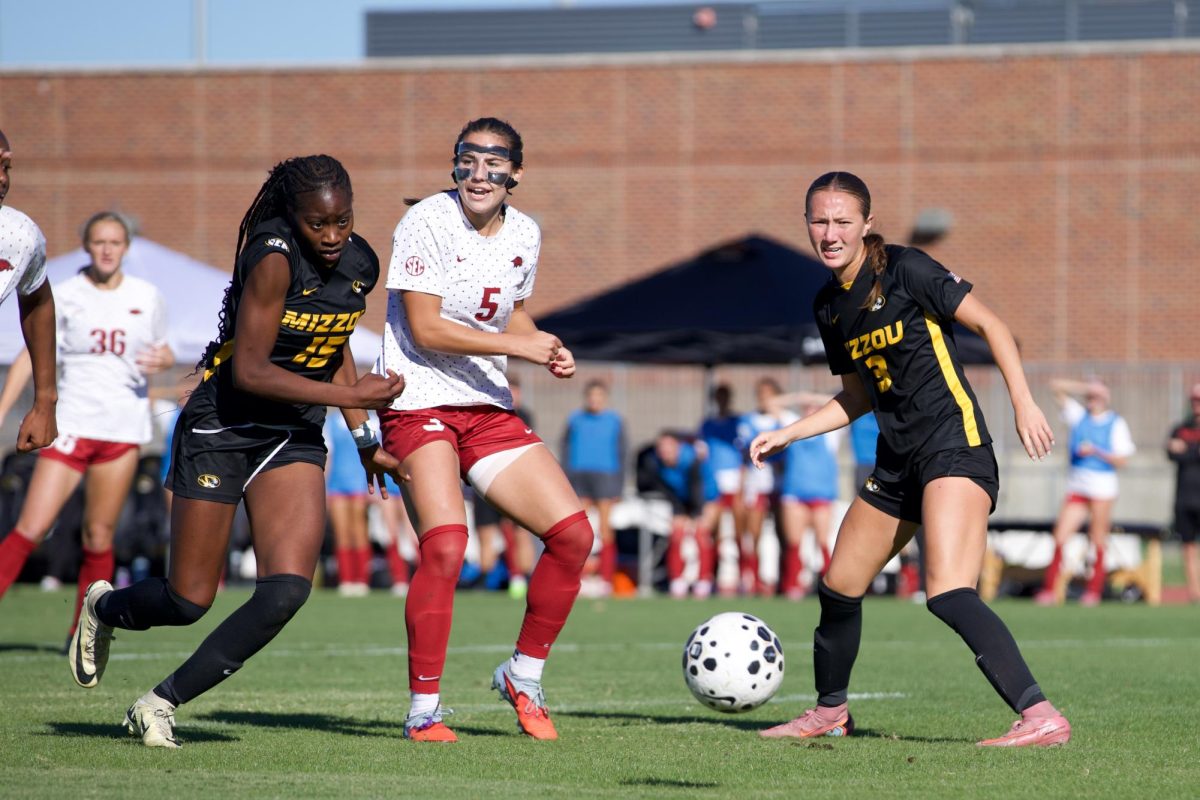It’s 5:30 p.m., about 30 minutes before the march is supposed to begin, and preparations are well underway. Media members scrambled to get the right shots, with the historic Columns and Jesse Hall serving as the backdrop for the Mizzou Black Student Athlete Association’s March for Change. With most people dressed in black, demonstrators began to trickle in, one by one, group by group to fill the Francis Quadrangle.
As the time to begin the march came, the Columns are surrounded by people that call for systemic change. The soccer team comes, holding signs that say “Black Lives Matter EVERYDAY, not just on SEC SATURDAYS” and “The SYSTEM was never broken it was BUILT this way.” Football coach Eliah Drinkwitz is in attendance, but insisted on focusing on the athletes, saying he wants “Tonight to be about the students.”
As the march began, Cason Suggs, MBSAA President and track runner, addressed the crowd from the stairs of Jesse Hall.
“Please keep your mask up and stay distant throughout the whole march and into the stadium, it’s very important,” Suggs said.
With fraternity and sorority houses to their right and Stankowski Field to their left, the demonstrators continued their pilgrimage. A whistle blew as demonstrators marched down Tiger Avenue. Signs reading “RACISM IS A PANDEMIC TOO” and “PREACH AND TEACH ANTI-RACISM,” the latter being held by Drinkwitz.
Chanting ‘Breonna Taylor’ and the phrase ‘Black Lives Matter,’ the crows of hundreds inched their way to Memorial Stadium. With police blocking off the intersection of Tiger Avenue and Hospital Drive, the marchers made their way into the parking lot adjacent to Brooks Hall. Then, in the unison of a choir, the masses sang ‘We Ready for Change’ to the tune of the classic song “Na Na Hey Hey Kiss Him Goodbye” by Steam.
As the crowd gets closer to the stadium, the demonstration heads into the tunnel underneath Stadium Boulevard. As cars pass overhead, “We Ready for Change” begins again. On the other side, the impassioned chants of ‘Black Lives Matter’ bounced against the black and gold painted cement walls. At the end of the two tunnels, the two combine, coming together to make one symphony.
After exiting the tunnel, Memorial Stadium was nearly within touching distance.
Once inside, much like an SEC Saturday, people made their way to their seats.
With the timer set to 18:39 and the microphone set up near half-field, the organizers began the sit-in with a message. MBSAA PR Chairman Olivia Evans starts the sit-in with an opening request.
“We are going to take five minutes of silence to pay our respects,” Evans said. “Thank you.”
As the demonstrators and organizers fell silent, the only noises heard in Memorial Stadium were the clicks of cameras and the hovering of a drone overhead. The organizers of the event stayed on one knee for the entire five minute duration.
Five minutes to remember those that they march for. Five minutes for Breonna Taylor. Five minutes for George Floyd. Five minutes for Trayvon Martin. Five minutes for so many others.
The time, eventually, came to an end. Now, for the speakers.
First, MBSAA President and track runner Cason Suggs. After thanking the crowd for coming, he began his speech.
“I don’t think I realized, growing up, how little I saw people that looked like me on TV, until I saw someone that looked like me on TV,” Suggs said. “I just remember seeing a young Black boy on TV, on the news… it was like as soon as I saw his face, I was like ‘that’s me.’ So, quickly I went to the remote and turned up the volume, I wanted to hear everything they had to say about him, because I thought they were gonna say the same things about me.”
Suggs paused for a moment before proceeding with his speech.
“But the thing I remember the most was the anchor saying ‘17-year-old Trayvon Martin was fatally shot.’ The suspect claimed that he was armed,” Suggs said. “After further investigation, we found out it was a bag of candy.”
Suggs’ words filled the arena, with those in attendance taking in every sentence. The crowd included many that never have — and never will — have to face that reality, and others acutely aware of it.
“I was searching, usually the things that I would find, the people that looked like me, were in sports,” Suggs said. “If you be that athlete, you would get the fame, you get the money, but the moment you talk about Black issues, who knows?”
Suggs’ words pierced through everyone of the demonstrators that came out to support, as seen in the eyes of those looking on over their masks.
“When I take my spikes off and I go into the street, I’m nervous,” Suggs said. “I’m doing anything I can to not look suspicious because I’ve been traumatized because too many times I’ve had people call the police on me for walking in a neighborhood that I guess they figured I didn’t belong in.”
MBSAA Vice President and soccer player Keiarra Slack was next to speak.
“There are many components to my identity, however, I am also a Black woman in a society that sees me as less than, even though I know I am worth more,” Slack said. “Sadly, it was on [the day Trayvon Martin was killed] that many of your peers, friends from home and other Black children like myself in that moment were reassured by their parents that we had to live our lives in a manner in which we must always comply and never resist in order to make it safely home.”
Slack continued: “Independence is the key to success, and you must never fold.”
In perhaps the most well-received line of dialogue of the evening, Slack stated that Black Lives Matter “is a human rights issue. This is not political.”
With that, the demonstration was over, with the exception of a press conference in the Bunker Club. The stands cleared, the organizers thanked those that came out to support and Memorial Stadium was nearly empty once again.
As mosquitos ran rampant on those in the Bunker Club, the press conference came and went.
“We really all had the same mission, and that was a step forward,” Suggs said. “Sometimes, movements like these don’t go as smoothly as this one. Sometimes people aren’t all on the same page like this, they don’t see it as a human rights issue.”
Suggs then proceeded to discuss that he sees the evening as a good showing for the University of Missouri community and discusses what he hopes was accomplished.
“To have this movement, not only is it a good representation of Mizzou and what we stand for, and as athletes and what we stand for,” Suggs said. “I hope that the biggest thing that people take away is that what we did here, the people that we brought together, the different groups, the different places of the world, you can do at home. You don’t have to have an arena, you don’t have to have a march, you just have to have a conversation.”
_Edited by Jack Soble | [email protected]_


